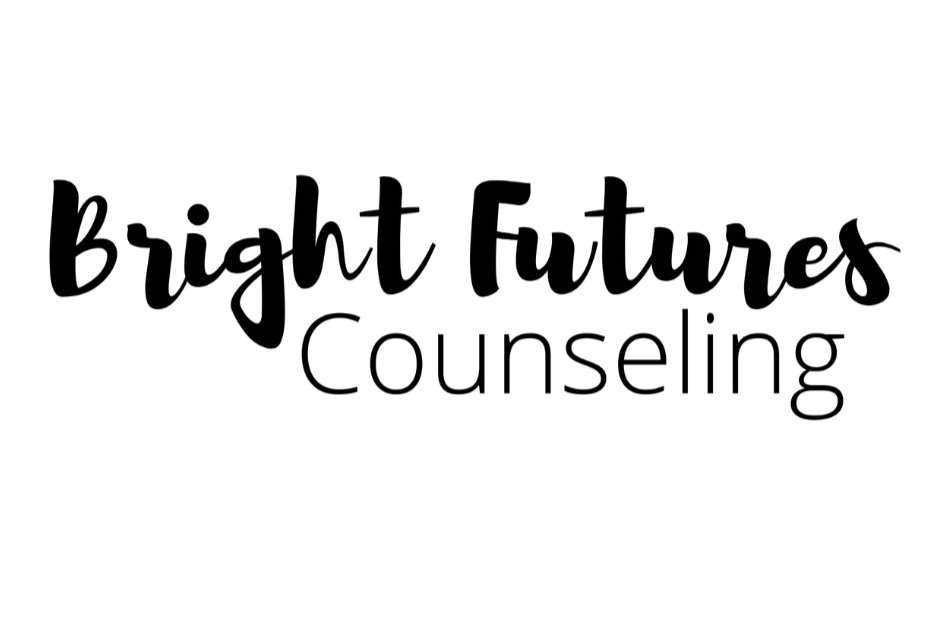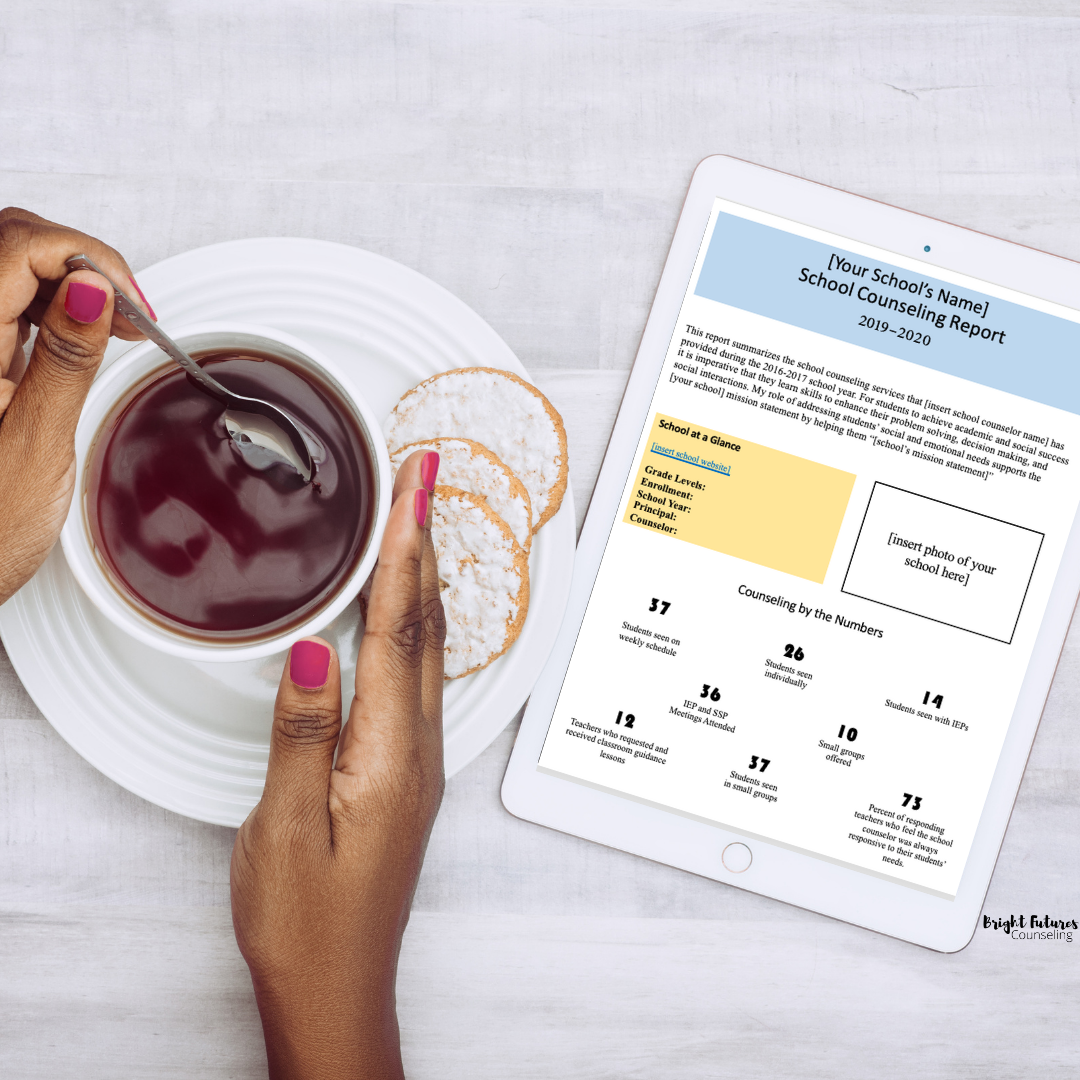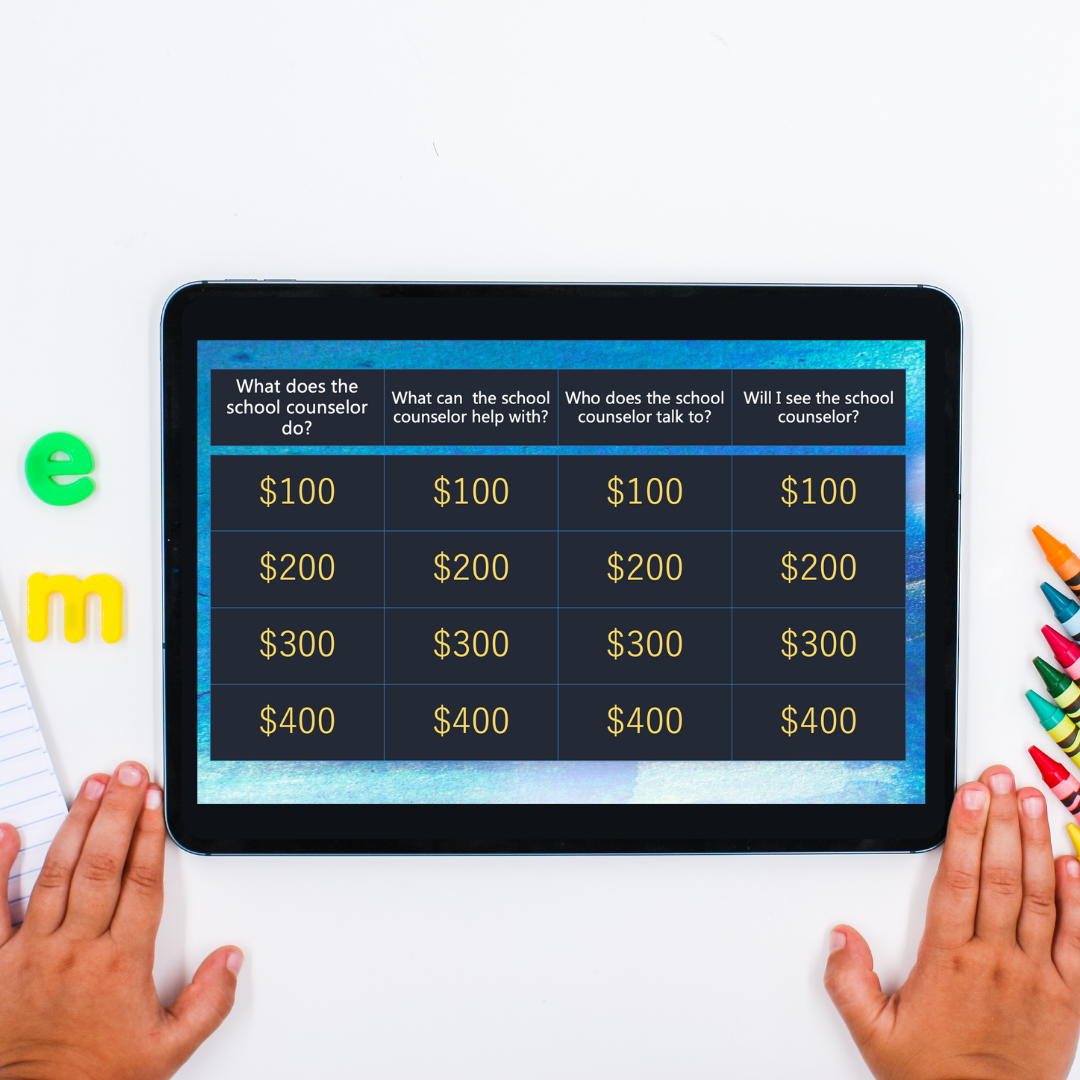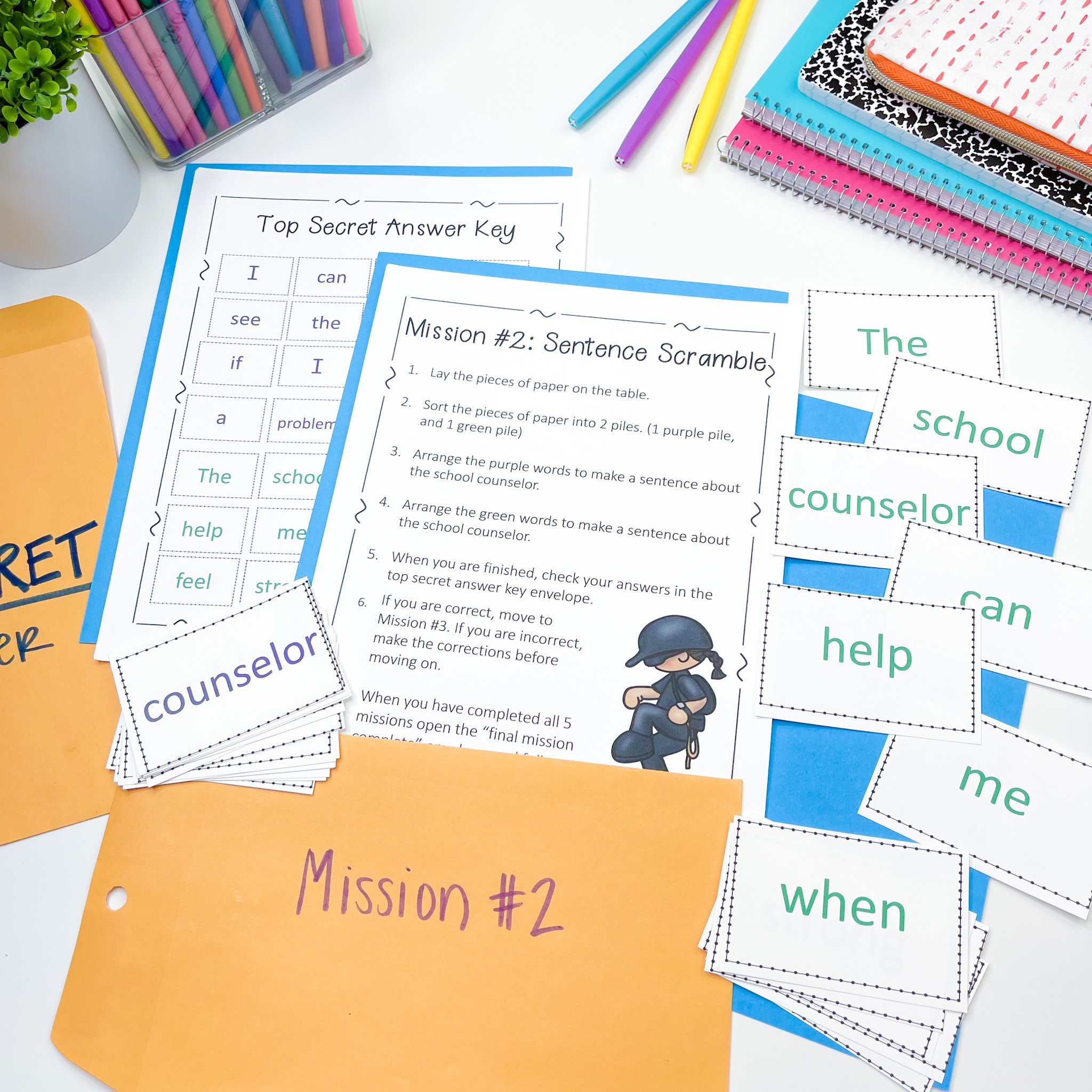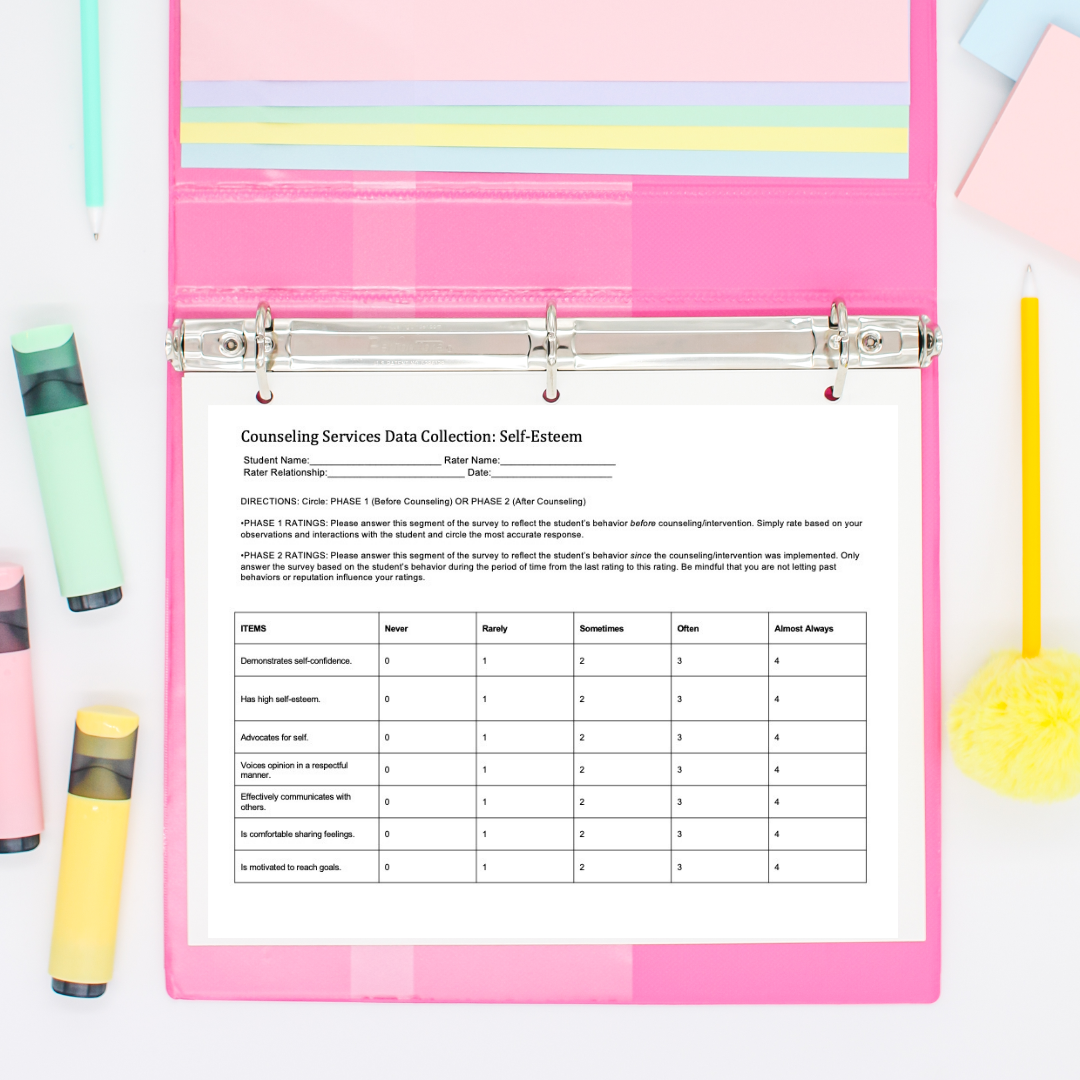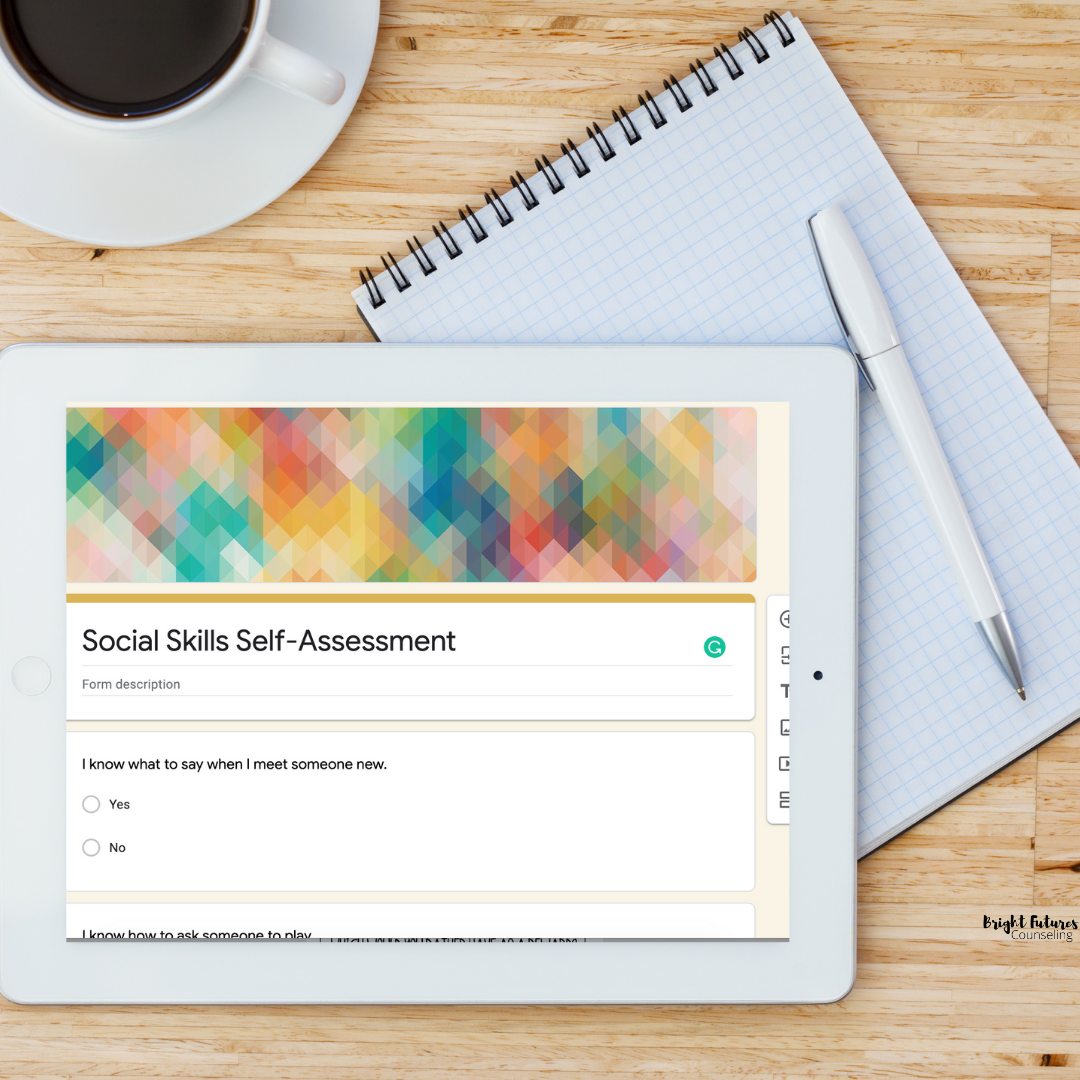The 6 School Counseling Cs for Back To School Season
A new school year is here and with it comes what seems like an unending to-do list for us school counselors! BTS season, however, does not have to be stressful, if you keep in mind these 6 Cs:
1. Collaborate with Teachers
Something you will be doing throughout the year is collaborating with teachers. I suggest starting as early as your first week back. It’s good to let them know you are around to support them and the kiddos in their class. In week 2 or so, I recommend you send out your Needs Assessment Form to understand from teachers what types of counseling services are needed and which SEL topics need to be covered. Do keep in mind, a school counseling needs assessment form is helpful throughout the school year - when you are back to school, after each semester/trimester, monthly, annually, etc. At this point, if you prefer going down the tech route, you could use Calendly or even a Google Spreadsheet for teachers to sign up for you to facilitate SEL lessons in their classrooms.
Don’t forget to also run through your counseling referral process with teachers. A digital or printed School Counseling Referral Form is not just handy, but will help you collect data that could go into your End of the Year Report, aid in measuring success and reworking your plan if needed, for the next school year.
Since your first few weeks might include student observations, be sure to let teachers know in advance when you will be in their classrooms. Check out this post on student observations! I highly encourage counselors to build rapport with teachers, and it does not have to be over a student of concern. You could send out a teacher check-in email every few weeks or even start a teacher wellness circle if you have the time, perhaps once a month!
2. Create Relationships with Students
Every year, like clockwork, my first step towards building student relationships involves a Meet the Counselor lesson in every class that I teach. With my upper elementary students, my jeopardy-inspired game show is quite the hit, and more recently I’ve been using an escape room activity (that’s great for middle school too!). Through these fun exercises, students are more aware of who I am, what I do, what I can help them with, and where to find me. I’m also able to take questions from them and bust some myths that they might have about meeting me (example: only if they’re in trouble, etc). I make sure they know they will see me in their classrooms but that I might meet some of them in groups or individually too. I also take them through the referral process and what confidentiality in counseling means. With my younger students, I prefer using a good story book or a ‘get to know you’ game to talk about what I do.
Another opportunity to create and sustain relationships with students is to ensure new students in transition are supported by you. To facilitate this, I run a 5 week New Students Friendship Group. This group is designed to help new students feel welcome and make new friends. Students self-reflect and share their challenges and successes through the lens of a growth mindset, and in the process also know that you are there to support them.
As the school counselor, your kiddos need to see you around - a lot! Be it at Back to School night, on the playground (whenever possible), or simply in the hallway wearing your brightest smile! The more your students see you around, the more opportunities you will have to build a relationship of trust with them.
3. Connect with Parents
Your students' parents are important stakeholders in your school counseling program and it’s totallyl worth your time to get to know them better. I look forward to Back to School night to introduce myself, my role, and the services I offer. I usually set up a station and have my Meet the Counselor brochures they can take home. Since I typically speak about how MTSS counseling works, I also make sure to give them information about the referral process and have referral forms available if they’d like to pick up one. If you are still in the virtual learning mode, you could consider creating a short video to introduce yourself and the school’s counseling program, and also provide links to your brochure and referral form.
Throughout the year, you will be in touch with some parents more than others. When a student is referred to me either for group or individual counseling, I set up a meeting (or quick phone call) with the parents to better understand the needs of their child and discuss how I will be working with them. I get parent permission, talk about confidentiality, and let them know how often I’ll be sharing progress updates. You can also give them a pre-sessions behavior survey to complete at this time. Check out these that I use..
If your school has a newsletter, it would be great if you could sign up as a contributor to send parents snippets of information/suggestions. Your write-up could be related to the importance of routines or goal setting at the beginning of the year, SEL based activity ideas for summer break at the end of the year, etc. In my experience, parents always welcome and appreciate valuable and timely communication from the school counselor.
4. Collect Data
I cannot emphasize enough how important it is to collect formal data and there’s no better time to start than now! Apart from it being a way for you to showcase student progress and identify student needs, it might also factor into your professional goals for the year. While referral and needs assessment forms are important, there are a host of other data tracking tools too that you should be utilizing to get a complete picture of the effectiveness and impact of your school counseling program. Progress monitoring scales or behavior surveys for teachers and parents, self assessment forms to be used pre and post group and individual counseling sessions, organization tools such as individual and group trackers, sign in and call sheets, counseling caseload and log sheets are equally necessary and are sure to help keep you organized and stress-free.
If data collection is new to you or you find the process overwhelming, check out this blog post on how to track school counseling data.
5. Construct a Counseling Curriculum Roadmap
If you’ve been a school counselor for a while, you would have an idea as to what SEL topics you would need to teach school-wide. Self Regulation (Zones of Regulation), Erin’s Law, and Size of the Problem, are typically class lessons you might consider teaching across all classes. Don’t forget to choose some seasonal ones too like a bullying prevention lesson in October or a friendship lesson around Valentine’s Day. Here’s also where responses to your needs assessment form sent to teachers will help you identify areas of need and you could start planning your lessons accordingly. Overwhelmed and unsure of how to go about doing this? Grab some guidance lesson ideas from this blog post and this free Yearlong School Counseling Curriculum Map.
Prepping for group and individual sessions may not be possible or practical when the school year is just about beginning. However, if you reflect on the data you’ve collected from last year (groups hosted, referrals made, crisis interventions, etc), you can be prepared to run groups you know are likely to happen. Every year, I have had the opportunity to run a New Students Group, a Self Regulation Group, a Self-Esteem Group, and a Study Skills Group, among a few others. I make sure to include engaging seasonal/themed activities that could be used in my one-on-one sessions as well. Be it for Halloween, St. Patrick’s Day, Easter, Christmas or Summer, adding tactile seasonal activities, such as crafts, that are visually stimulating too for your kiddos, will definitely help spruce up your tier 2 and tier 3 interventions. Don’t forget to gather some fun digital resources such as Boom Cards, board games, discussion cards, and journals.
6. Curate your SEL Library
This has got to be my favorite and least stressful aspect of BTS season! If you’re an elementary counselor, I recommend you stock up on the wide and eclectic variety of SEL themed/counseling books by Julia Cook, Trudy Ludwig, and Jory John. Need more recommendations? Check out my must-have books for elementary school counseling and this school counseling video resource guide.
BTS season can be equal amounts of fun and work, and can of course prove to be extremely time consuming. So if you’re looking for ready to implement resources that include all the ones mentioned in this blog post and more, your search is bound to end with my Year Long Elementary Counseling Program. Comprising 63 different low prep school counseling resources, this school counseling program is designed to meet your student's needs at each of the three tiers of school counseling. All small groups are set to ASCA mindset and behavior standards.
I hope you now feel more empowered and excited to take on a new academic year. You’ve got this!
